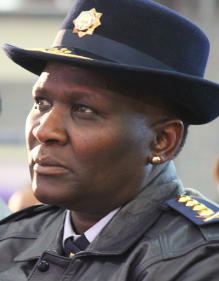
In addition, they don’t tell us much about the true state of corruption – are the anti-corruption laws ever used, and are they being used effectively to prevent corruption?
There have been numerous calls for more detail on corruption to be provided in the annual crime figures. “Correctly identifying corruption in the statistics will better enable the public, the policy makers and the law enforcement authorities to combat it. It will reveal patterns and hotspots of corruption; it will reveal the extent to which corruption is reported; and it will enable the public to assess the relative success or failure of the law enforcement authorities in dealing with the crime of corruption,” said Corruption Watch’s executive director David Lewis a year ago, commenting on the release of the 2012 figures.
The annual crime statistics have never delved into corruption, and much of it remains hidden even though various reports indicate that billions of rands are lost to corruption every year. For providing statistics that turn a blind eye on corruption and failing to convince that crime is under control in South Africa, we make the national police commissioner General Riah Phiyega the zero of the week.
Can the figures be trusted?
The stats that are provided don’t reveal much, are only for reported crimes, and are not up to date. Ratios and percentages are given, but not absolute numbers. And an analysis by the ISS shows that the changes in the crime rate from the previous report to this report, don’t add up.
The ISS came to the conclusion that the error stems from the use of mid-term population estimates. The South African Police Service (SAPS) worked out the 2011/2012 crime statistics ratios, per 100 000 of the population, using the 2011 mid-year population estimate of 50 586 757, a figure supplied by Statistics South Africa. However, this projection was based on the 2001 census, and the 2011 census showed that in reality, there were 51 579 548 people in the country – this data was released towards the end of 2012, after the crime stats were made known.
The SAPS used the mid-year estimate of a population of 52 274 945 in 2012, to calculate the the 2012/2013 ratios. It then worked out the change in the ratios per 100 000 of the population between the two.
But, explained the ISS, the SAPS should have used the correct population of 51 579 548 to determine the ratios per crime category in 2011/12 before calculating the difference between that year's and the 2012/13 crime ratios.
This means that the SAPS’s method is statistically flawed, because the changes in the crime rates are calculated on inaccurate population estimates.
How does this affect the results? When the correct census data for 2011 was put into the equation, said the ISS, the murder rate in 2011/12 was 30.3 per 100 000 people and not 30.9 as reported by SAPS in the last reporting period. The murder rate for 2012/13 stood at 31.3 per 100 000 people, which reflects an increase of 2.8% in the rate of murders and not 0.6% as presented officially.
South Africa’s murder rate is therefore about four and a half times higher than the global average of 6.9 murders per 100 000.
The absolute figure of 16 259 murders in 2012/2013, which is 620 more than the previous year’s figure of 15 609 – a 4.2% increase – is not affected.
Similarly, the rate of sexual offences increased by 1.53% (it didn’t decrease by 0.4%) and there was an increase of 1.30% in non-residential robberies (not a decrease of 0.6%). The rate of aggravated robbery was up 3.24% (not 1.2%), that of residential burglary by 5.33% (not 3.3%), commercial crime by 2.61% (not 0.6%), and residential robbery by 5.65% (not 3.6%).
Read more about the ISS’s concerns in this article.

